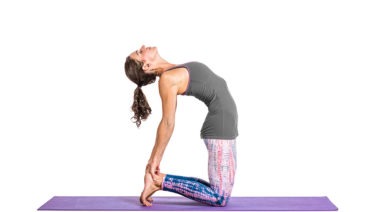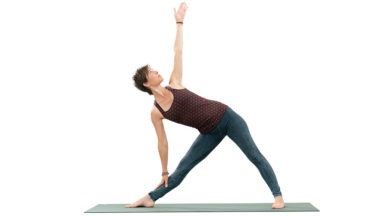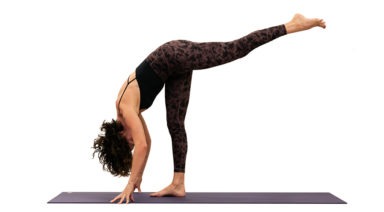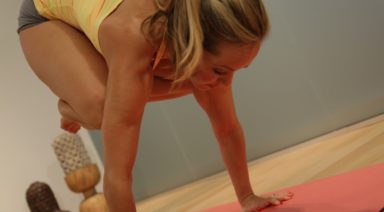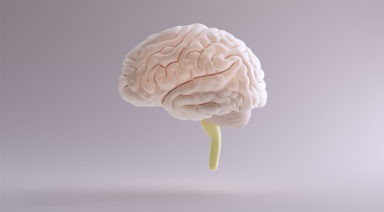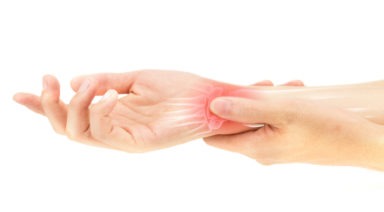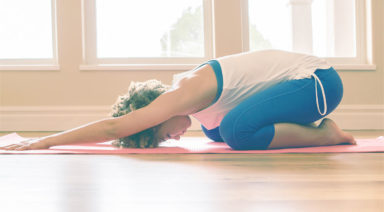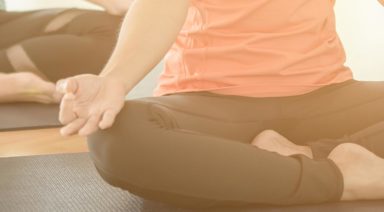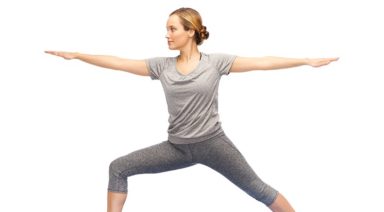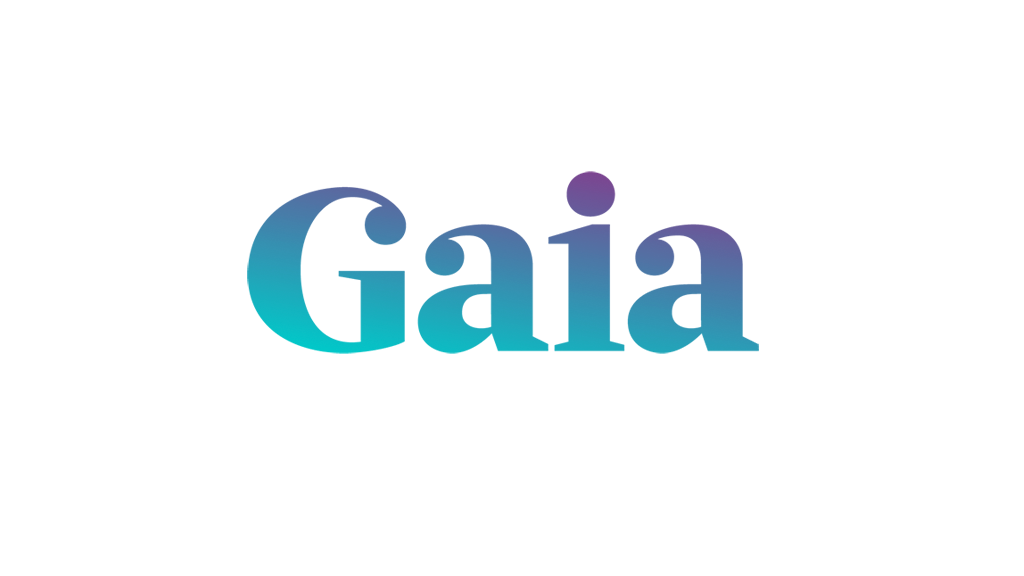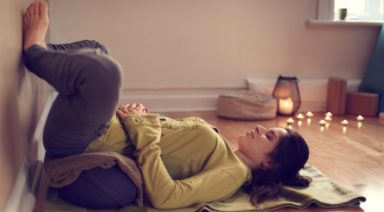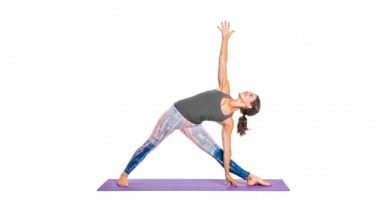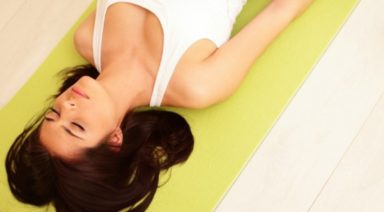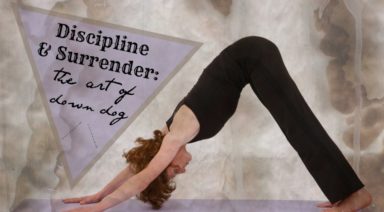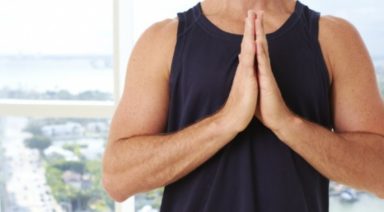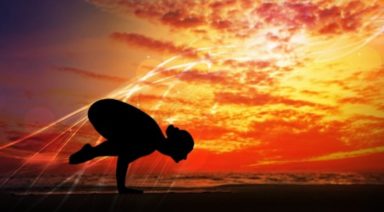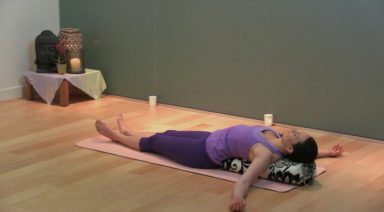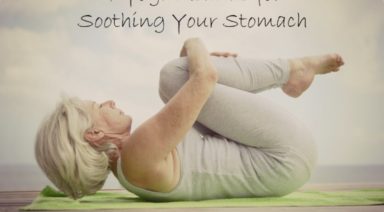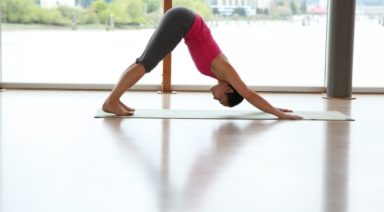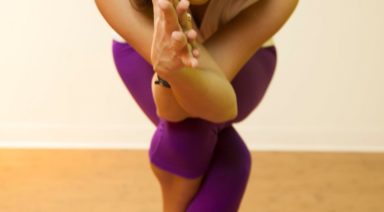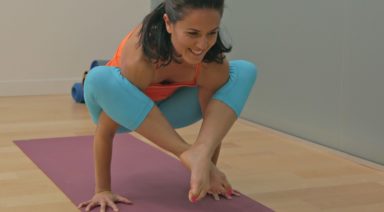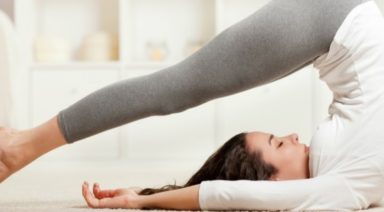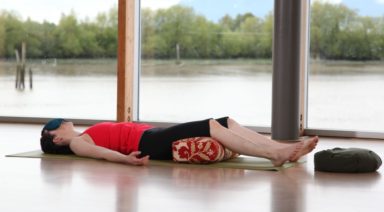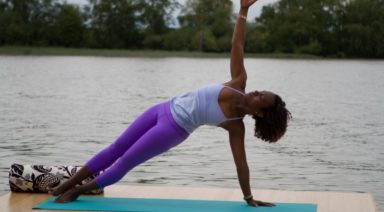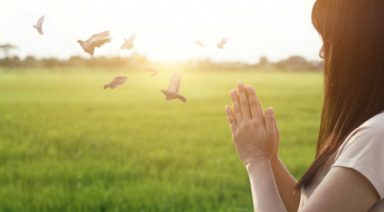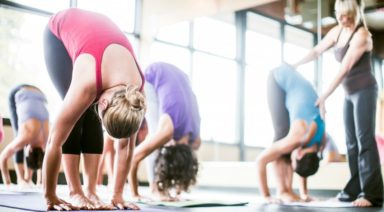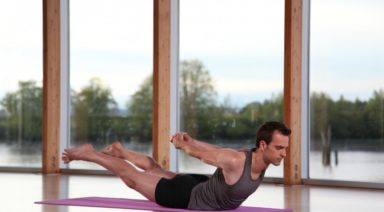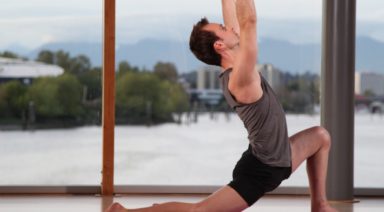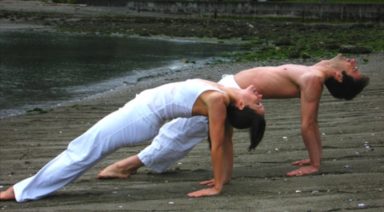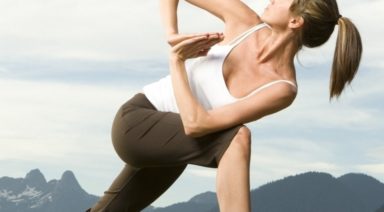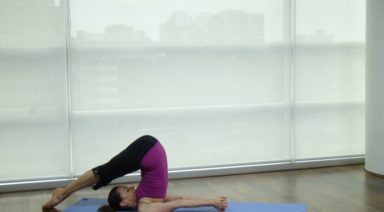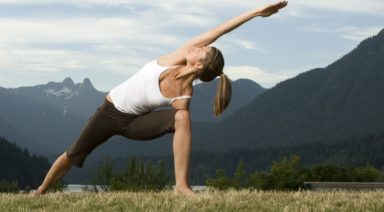Parivrtta Trikonasana: Revolved Triangle Pose

ADJUSTMENTS | BENEFITS | SEQUENCING | SANSKRIT | STEPS
Parivrtta trikonasana (par-ee-VRIT-tah trik-cone-AHS-anna) is a great counterpose to its expansive sibling, utthita trikonasana (extended triangle). Stretching your spine and releasing tension in your chest and shoulders is a great antidote to a long work day.
Philosophy + Origin
As the more feminine version of utthita trikonasana, revolved triangle reminds us that there are always two sides to every coin — the dark to the light, the cold to the hot, the feminine to the masculine, the stillness after the movement. Reflecting on the differences and similarities between the two versions of triangle pose can help you find balance between two apparent opposites. Although feminine and masculine might seem like night and day, there’s a place in the middle where the two always meet.
ADJUSTMENTS/MODIFICATIONS:
- If shoulders are tight or tender, keep the raised hand on your hip rather than extending it straight toward the sky.
- Use a block under your bottom hand to bring the ground closer to you.
- Press the forearm of the bottom arm against the shin of the front leg to deepen the twist.
- Keep your gaze down or to the side to release the neck.
STEP-BY-STEP:
- Begin in a lunge with your right foot forward. Straighten your front leg and hop your back foot in to place your heel on the ground (pyramid pose).
- Place your left hand on the floor or a block, to the inside of your right foot. Place your right hand to your right hip and encourage your right hip behind you.
- Extend the crown of your head forward, then turn your torso toward your right leg.
- Lift your right arm toward the ceiling.
- Keep rooting down through your left heel.
- Option to turn your gaze to the ceiling.
- Hold for 5-10 breaths, then release back to lunge. Repeat on the other side.
PREPARATORY POSES:
- Pyramid pose | Parsvottanasana
- Wide-legged forward fold | Prasarita padottanasana
- Extended triangle pose | Utthita trikonasana
SEQUENTIAL POSES:
- Revolved half moon | Parivrtta ardha chandrasana
- Head to knee pose | Janu sirsasana
- Pose dedicated to the sage Marichi II | Marichyasana II
COUNTER POSES:
- Half lord of the fishes pose | Ardha matsyendrasana
- Standing forward fold | Uttanasana
SANSKRIT:
- Parivrtta = revolved
- Trikona = triangle
- Asana = pose
PHYSICAL BENEFITS:
- Expands chest and shoulders.
- Stretches the spine and increases range of motion.
- Strengthens and tones the thighs.
ENERGETIC BENEFITS:
- Soothes and stills the mind.
Legal Disclaimer Before participating in any exercise program or using any fitness products or services that may be described and/or made accessible in or through the Gaia Website and/or the Services, you should consult with a physician or other healthcare provider. Read more about Gaia’s Terms Of Use.
Ustrasana: Camel Pose
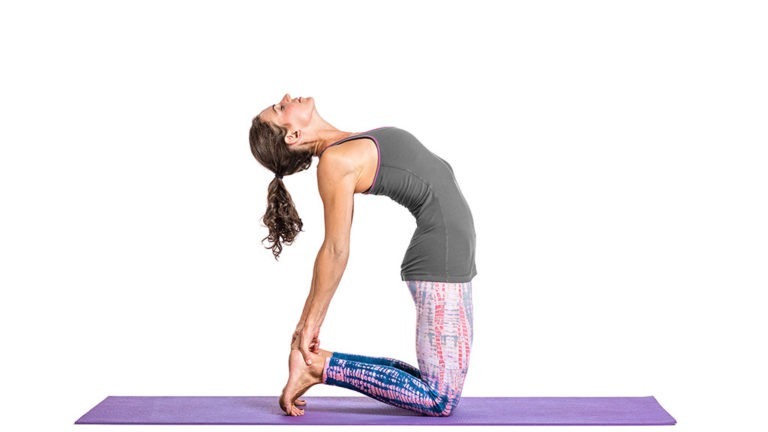
ADJUSTMENTS | BENEFITS | MANTRA | MUDRA | PREP POSES | SANSKRIT | STEPS
Ustrasana (oosh-TRAHS-anna), offers a long list of benefits for both the physical and subtle bodies. Thanks to its many different variations and modifications, there are plenty of ways for individuals of all levels to appreciate the chest-opening and chakra-opening effects of camel pose.
Philosophy + Origin
Camel pose is named because the shape resembles the hump on a camel’s back, however there are other ways to consider the name when approaching the posture. Camels are known for their slow, steady, almost methodical way of moving. Rather than trying to race into the posture, moving slowly and methodically will help you find its benefits safely. Camels use their humps as food reserves, like well-packed bags ready to be used when needed. This type of physical preparation, a part of the camel’s natural adaptation for survival, is essential for this pose as well. Take your time to gather and practice the skills and knowledge necessary to take a back-bending journey to ensure that you come in and out of the posture with ease and poise.



